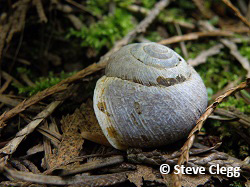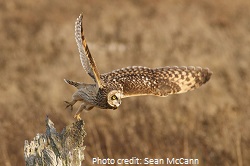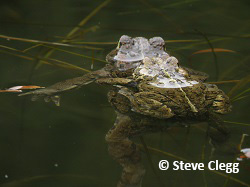Species at Risk
Chilliwack is home to many plants and animals that are increasingly rare and are in danger of disappearing from the wild. Protecting Species at Risk is important in maintaining ecosystem health and biodiversity. Some of the threats to these species are:
- habitat loss,
- pollution,
- invasive species, and
- climate change.
Chilliwack is working to integrate protection of Species at Risk and their habitat at a policy level. For example, the Official Community Plan’s Goal Number 4 considers species at risk in relevant development proposals. In addition, Chilliwack is working with partners to protect and restore habitat for wildlife, including species at risk, around our community.
How can you help?
- Learn as much as you can about the Species at Risk profiled below on this page.
- Remove all invasive species on your property and choose native plants to help support Species at Risk.
- Reduce your greenhouse gas emissions through cycling, public transportation and energy efficiency.
- Download the BC Wildlife Federation's conservation app to your iPhone to report a concern about a species at risk.
- Use the BC Conservation Data Centre’s iMap to see if there are Species at Risk near you. If so, consider stewarding your land in a manner that facilitates their existence, too.
- Get involved with local projects and initiatives or connect with our Environmental Services Department for more opportunities.
Species at Risk in Chilliwack
The following Species at Risk call Chilliwack home, just like us. Learn more about each one by clicking on the links for detailed descriptions.
 |
A medium-sized slender owl (up to 37 cm tall) with a |
|
 |
A swallow that is metallic blue-black on top and light brown |
|
 |
Coastal Giant Salamander, Dicamptodon tenebrosus A large-sized salamander (up to 35 cm) with a long, thick body, and mottled skin. |
|
 |
Coastal Tailed Frog, Ascaphus truei A small amphibian (up to 5.1 cm) whose eyes have vertical |
|
 |
Great Blue Heron, fannini subspecies, Ardea Herodias fannini A tall, wading bird (height of 60 cm, wingspan of 1.5 m) |
|
 |
Little Brown Myotis, Myotis lucifugus A small bat (5 cm in length) with large black ears, black wings, and |
|
 |
Mountain Beaver, Aplodontia rufa A large rodent (up to 28 cm long) with small eyes and ears, |
|
 |
Northern Red-legged Frog, Rana aurora A medium-sized frog (up to 10 cm) with skin ridges down |
|
 |
Oregon Forestsnail, Allogona townsendiana A large land snail (23-30 mm) with a brown or yellow-brown |
|
 |
Oregon Spotted Frog, Rana pretiosa A medium-sized frog (less than 10 cm) with spots on its |
|
 |
Pacific Water Shrew, Sorex bendirii A large shrew (up to 17.9 cm including the tail) with |
|
 |
Phantom Orchid, Cephalanthera austiniae An elusive non-photosynthetic orchid with a white stem |
|
 |
Salish Sucker, Catostomus sp. 4 A freshwater fish (up to 24 cm) with an elongated and |
|
 |
Short-Eared Owl, Asio flammeus A medium-sized owl with a brown spotted body (up to 44 cm) |
|
 |
Tall Bugbane, Actaea elata var. elata Tall perennial plant (up to 2 m) with maple-like leaves that have |
|
 |
Western Painted Turtle – A turtle (up to 25 cm) with a smooth olive-green to dark brown |
|
 |
Western Screech-owl, kennicottii subspecies, A small owl with a brown-grey streaked compact body |
|
 |
A large-sized amphibian (up to 12.5 cm) with dry warts and a |
